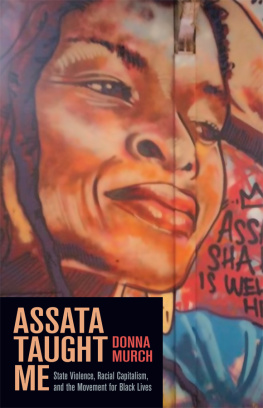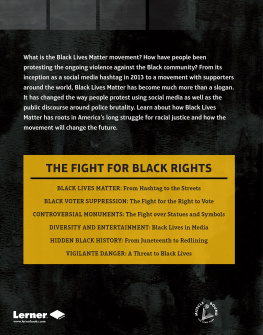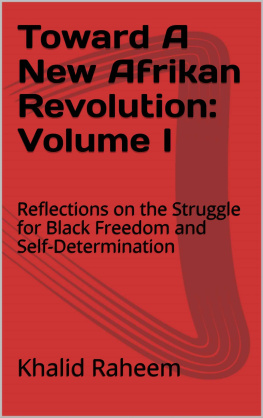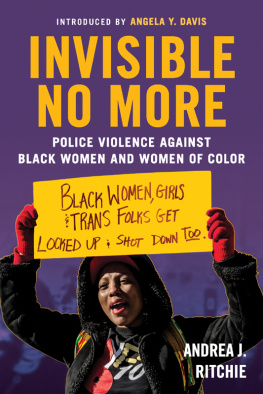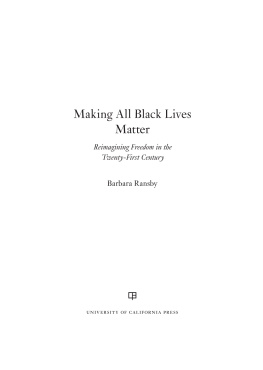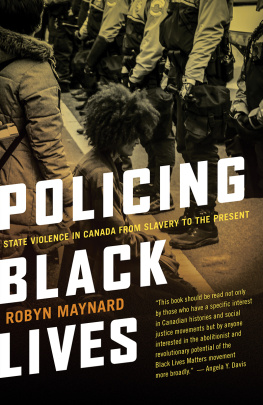Contents
Landmarks
PRAISE FOR ASSATA TAUGHT ME
Assata Taught Me is a master class on the Black Radical Tradition. From the extractive structures of the worlds largest police state to the revolutionary resistance, Donna Murch meticulously traces the history and contours of the current Movement for Black Lives. This book is seminal like its namesake, Assata Shakur.
IBRAM X. KENDI, author of How to Be an Antiracist
Donna Murch is one of the sharpest, most incisive, and elegant writers on racism, radicalism, and struggle today. In this collection of essays assessing the current contours of the contemporary movement against racism in the United States, Murch combines a historians rigor with a cultural critics insights and the passionate expression of someone deeply engaged with the politics, debates, and key questions confronting activists and organizers today. This is a smart and sophisticated book that should be read and studied by everyone in search of answers to the profound crises that continue to confront this country.
KEEANGA-YAMAHTTA TAYLOR, author of From #BlackLivesMatter to Black Liberation
Donna Murch is one of our most brilliant thinkers and a committed scholar activist. In Assata Taught Me, she offers powerful insights about the Black freedom movement and Black radical politics, past and present. I always learn and am inspired when I read her work. This book is essential reading for historians, organizers, and people interested in making sense of this historical moment, and more importantly, in changing the world.
BARBARA RANSBY, author of Ella Baker and the Black Freedom Movement
To feel anything other than fatalistic about the moment in which we currently live, and to see the future as anything less than perilous, might seem utterly foolishunless, that is, one has sat with Donna Murchs latest. With her rigorous rescuing, remembering, and reckoning with past histories of trauma, struggle, and resistance that current pundits and progressives alike too easily forget, as well as her searing reminders of present-day possibilities for a better world, Murch, like Assata Shakur before her, teaches us much we desperately need to learn in this time of momentous upheaval.
HEATHER ANN THOMPSON, Pulitzer Prizewinning author of Blood in the Water: The Attica Prison Uprising of 1971 of 1971 and its Legacy
Assata Shakur was a prisoner of war. Donna Murch understands this profoundly, which is why she wrote a book about a half-century of overlapping domestic wars in the United States. Each essay forcefully drives home the point that to be Black in Americato be Black in the worldis to live in a state of war under a warfare state. She writes history with fire, burning through decades of liberal obfuscation to reveal a world, not of activists and interest groups, but of combatants, collateral damage, refugees, and POWs. Assata has taught all of us, and her key lessons are found in these pages.
ROBIN D.G. KELLEY, author of Freedom Dreams: The Black Radical Imagination
In this essential collection of essays, Donna Murch sheds new light on the relationship between the Movement for Black Lives and the earlier practices and ideals of Black Power. She shows how the emergence of the largest police state, with its spectacular and mundane violence in the intervening years, has shaped the demands, organizations, and futures etched under the banner of Black Lives Matter. Written with verve and clarity, this is a book for our times.
ADOM GETACHEW, author of Worldmaking after Empire: The Rise and Fall of Self-Determination
Donna Murch is one of the most astute, fearless, and brilliant US historians working today. These essays are necessary to understand who we are now and how we got here.
JASON STANLEY, author of How Fascism Works
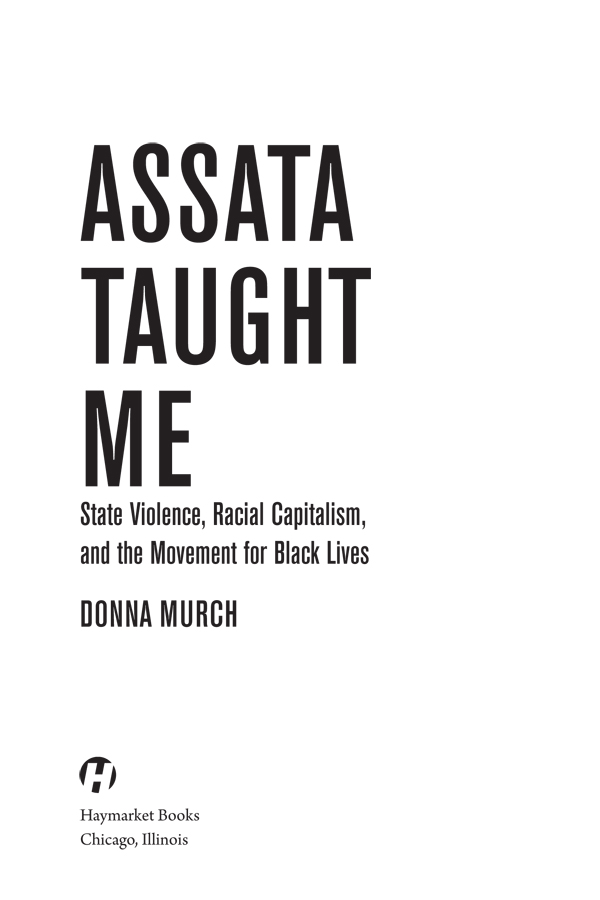
2022 Donna Murch
Published in 2022 by
Haymarket Books
P.O. Box 180165
Chicago, IL 60618
773-583-7884
www.haymarketbooks.org
ISBN: 978-1-64259-517-8
Distributed to the trade in the US through Consortium Book Sales and Distribution (www.cbsd.com) and internationally through Ingram Publisher Services International (www.ingramcontent.com).
This book was published with the generous support of Lannan Foundation and Wallace Action Fund.
Special discounts are available for bulk purchases by organizations and institutions. Please email for more information.
Cover image of a mural depicting Assata Shakur in the ExhibitBe public art takeover of DeGaulle Manor housing complex in New Orleans, photographed by Irene Rible. Cover design by Rachel Cohen.
Library of Congress Cataloging-in-Publication data is available.

For Carla Jean, Lucy Jean, and Madison Savannah
I believe in living.
I believe in birth.
I believe in the sweat of love
and in the fire of truth.
And i believe that a lost ship,
steered by tired, seasick sailors,
can still be guided home
to port.
Assata Shakur, Affirmation
INTRODUCTION
A ssata Taught Me, the title of this collection of essays, has a double meaning. The first references contemporary herstory of mobilization against racial violence; the second speaks to my own trajectory as a Black Panther historian. Since 2012, a new generation of activists has anointed the phrase through T-shirts, hoodies, protest banners, and murals as an expression not only of the militant spirit of the contemporary Black Lives Matter Movement (BLMM) but also of its continuities with the Black Radical organizing of generations past. In the early twenty-first century, an overwhelmingly Black, female-led social movement against state violence directed at African Americans throughout the United States has embraced Assata Shakur, a former rank-and-file member of the New York Black Panther Party (BPP) and Black Liberation Army (BLA), as a living embodiment of struggle.
The second meaning references my own politicization and introduction to the Black Panther Party through Shakurs writings in the twilight years of the Cold War. In 1987, Assata Shakur published her autobiography as a fugitive in Cuba, under the protection of Fidel Castro, with a phalanx of federal, state, and local US law enforcement in pursuit of her after a successful escape from the Clinton Correctional Facility for Women in New Jersey eight years before. The FBI placed a million-dollar bounty for her capture dead or alive, a figure which the state of New Jersey later doubled. The timing of the publication of Assata: An Autobiography was incredibly significant, coming as it did during Ronald Reagans second term in office, just on the cusp of the IranContra hearings. Republicans had appropriated Martin Luther
In contrast to the uses and abuses of the Civil Rights Movement by its antagonists, Assata Shakur represented a counterhistory for my younger self. Starting in 1973, when Black communities throughout the United States created sanctuary spaces announcing Assata Is Welcome Here, the fugitive revolutionary became a recurrent inspiration and icon for Black struggle internationally. In the late 1980s, Assata embodied a repressed history of resistance, Black Power, and Black Radicalism for a younger generation coming of age at the height of the Reagan era and its intensified domestic wars on drugs and crime that functioned as a de facto war on Black youth. Shakurs participation in the armed wing of the Black Liberation struggle, through a succession of trials, torture, and incarceration, made her the antithesis of a politics of conciliation and incorporation. For me, and others who followed,

